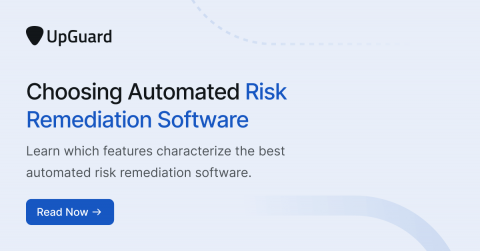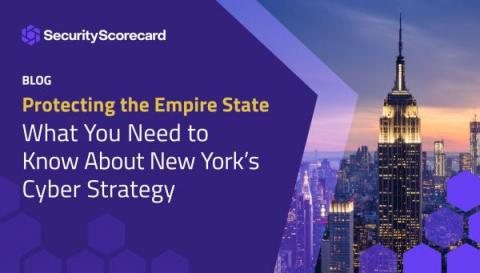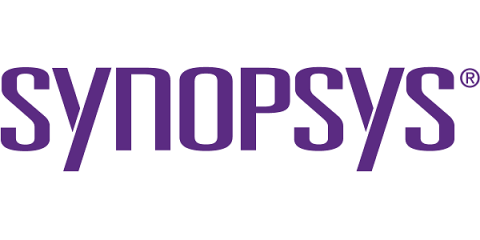Security | Threat Detection | Cyberattacks | DevSecOps | Compliance
August 2023
Your HTTPS Redirection Risk Exposure
Introducing Riscosity's New Look
Today you’ll notice our new logo and typography. We’ve introduced a minimalist approach and opened up spacing within the letters to help with legibility and visual continuity. Our mission as a company is to help teams quickly and painlessly meet data security requirements with high confidence. Our goal is to align that mission with our user's entire experience, from day one.
4 Ways To Improve Your Cloud Security Posture Management
The Role of Software in Vendor Risk Management Products
How to Conduct a Vulnerability Assessment
What Role Does Procurement Play in Supply Chain Risk Management?
Top 5 Challenges and Solutions in Managing Third-Party Risks
Predicting the stability of security ratings over time
The concept of ratings has been the accepted standard for making investment decisions. The first commercial credit reporting agency, the Mercantile Agency, was founded in 1841. While this relied on largely subjective methods of evaluation, it wasn’t until the 1960s, when credit reporting became computerized, that the industry consolidated and took off. Since then, credit and financial ratings models have progressed to become objective and trustworthy data points that inform lending decisions.
Supply Chain Resilience: 4 Ways to Get Ahead of Third-Party Cyber Risk
Road to DORA and PS21/3 Compliance: Leveraging Technology to Reduce Risk
Introducing Bitsight Third-Party Vulnerability Response
Cybersecurity's Crucial Role Amidst Escalating Financial Crime Risks
In an era of escalating financial crimes, the spotlight shines brightly on the rising concerns in the realm of cybersecurity. According to a recent survey, a staggering 68% of UK risk experts anticipate a surge in financial crime risks over the next year. These apprehensions echo globally, with 69% of executives and risk professionals worldwide foreseeing an upswing in financial crime risks, predominantly fueled by cybersecurity threats and data breaches.
The SEC's New Cybersecurity Regulations: Understanding the Impact for Companies & Their Shareholders
NetApp + SecurityScorecard Core Testimonial
3 Best Practices for External Attack Surface Management
8 Key Elements of a Third-Party Risk Management Policy
Key Steps to Developing an Effective Third-Party Risk Management Program
Choosing Automated Risk Remediation Software (in 2023)
How to Build a Risk Register for Your Business
Checklist for Third-Party Risk Assessments
What are the Principles of Information Security?
What Is Financial Crime Risk Management (FCRM)?
Play Your Cards Right: How to Adapt Your GRC Program to the Modern Tech Stack
Want to Reduce Your Cyber Risk? Increase Diversity!
Introducing Snyk's new Risk Score for risk-based prioritization
We’re happy to announce the open beta availability of Snyk’s new Risk Score! Replacing the existing Priority Score, the new Risk Score was designed to help you prioritize more effectively by providing you with an accurate and holistic understanding of the risk posed by a given security issue.
What is Cybersecurity Risk and How Can You Manage It?
Protecting the Empire State
Governor Kathy Hochul recently unveiled New York’s first-ever state-wide cybersecurity strategy, intended to protect the state’s digital systems and infrastructure from the ever-growing presence of cyber threats.
6 Myths About Cybersecurity Ratings (and 1 Truth)
Today, electricity is so ubiquitous that it’s difficult to perform even basic tasks without it. But when electricity was first introduced, it took decades for broad acceptance and adoption because it was misunderstood and misused. Slowly, the benefits began to outweigh the cons. As with any innovation, there are setbacks, but electricity has overwhelmingly been a force for good. The same can be said about cybersecurity risk ratings. Are they perfect? No.
New SEC cybersecurity rules: Five things every public company CISO should do now
Positive Risk vs. Negative Risk in Enterprise Risk Management
Businesses face risk all the time – and that’s OK. Even though the word “risk” typically has negative connotations, the term can actually represent many situations, not all of them unfavorable. ISO 31000 states that risk is the “effect of uncertainty on objectives.” That actually means risk can come in two types: positive and negative.
How to Negotiate the Best Cyber Insurance Policy
Cybersecurity in the Entertainment Industry: Risks and Solutions
What is a Whaling Attack and How to Prevent It
7 Third-Party Risk Management Trends to be Aware of in 2024
Choosing Automated Vendor Risk Remediation Software (in 2023)
What is Cyber Insurance? (And Is It Worth the Costs?)
Spot risks with our new IP view
Customers often tell us of instances where someone in their team spins up a new machine that isn’t using an approved geolocation, or that they see an unexpected spike in hosting from a particular country. These anomalies can put an organization at risk, especially since they are difficult to spot in an automated way.
NIST Cyber Risk Scoring
An Easy Guide to Understanding Risk Management and Quantification, Part 1
What Data Breaches Tell Us: An Analysis of 17,000 U.S. Data Breaches
Attack Surface Intelligence - Promo
Managed Cyber Risk Services - Promo
Salesforce Importer
Episode 1: SSC Incident Responders vs Brazilian Hackers
Episode 2: ASI Prevents Deadly Flood in Italian Town
Episode 3: SecurityScorecard Equifax Breach Congressional Enquiry
Safeguard Your Business From the Risks of Social Media
CIS Critical Security Controls: What Are They and How Can You Meet These Standards?
Top 5 Security Vulnerabilities of 2023
2023 is a year of “digital forest fires.” The MOVEit and the Barracuda Networks’ email supply chain attacks underscore the massive butterfly effect a single software flaw can have on the threat landscape. Supply chain attacks spread like a forest fire. Once cybercriminals compromise widely used software, attackers gain access to potentially all organizations that use that software.
The Importance of Security Risk Assessments and How to Conduct Them
IT risk assessments are vital for cybersecurity and information security risk management in every organization today. By identifying threats to your IT systems, data and other resources and understanding their potential business impacts, you can prioritize your mitigation efforts to avoid costly business disruptions, data breaches, compliance penalties and other damage.
What Is Risk Communication?
SEC Adopts Cyber Disclosure Rule
Why Independent Benchmarking Data is a Critical Part of SEC Cybersecurity Disclosure Strategy
Choosing a Financial Services Cyber Risk Remediation Product
Choosing a Tech Cyber Risk Remediation Product (Key Features)
3 Tips for Improving your Cybersecurity Intelligence
Security Misconfigurations: Definition, Causes, and Avoidance Strategies
Highlights & Insights of a Cyber Risk Quantification Journey
New SEC Cyber Requirements Unite Security Leaders and Business Stakeholders
Why cyber insurance should be part of any comprehensive risk management strategy
The recent rise of ransomware, attacks on supply chains and increasing costliness of privacy regulations has made cyber insurance an important topic of discussion. But it can be tricky to keep up with cyber insurance requirements. One of the most robust ways to meet those requirements is with multi-factor authentication (MFA).








































